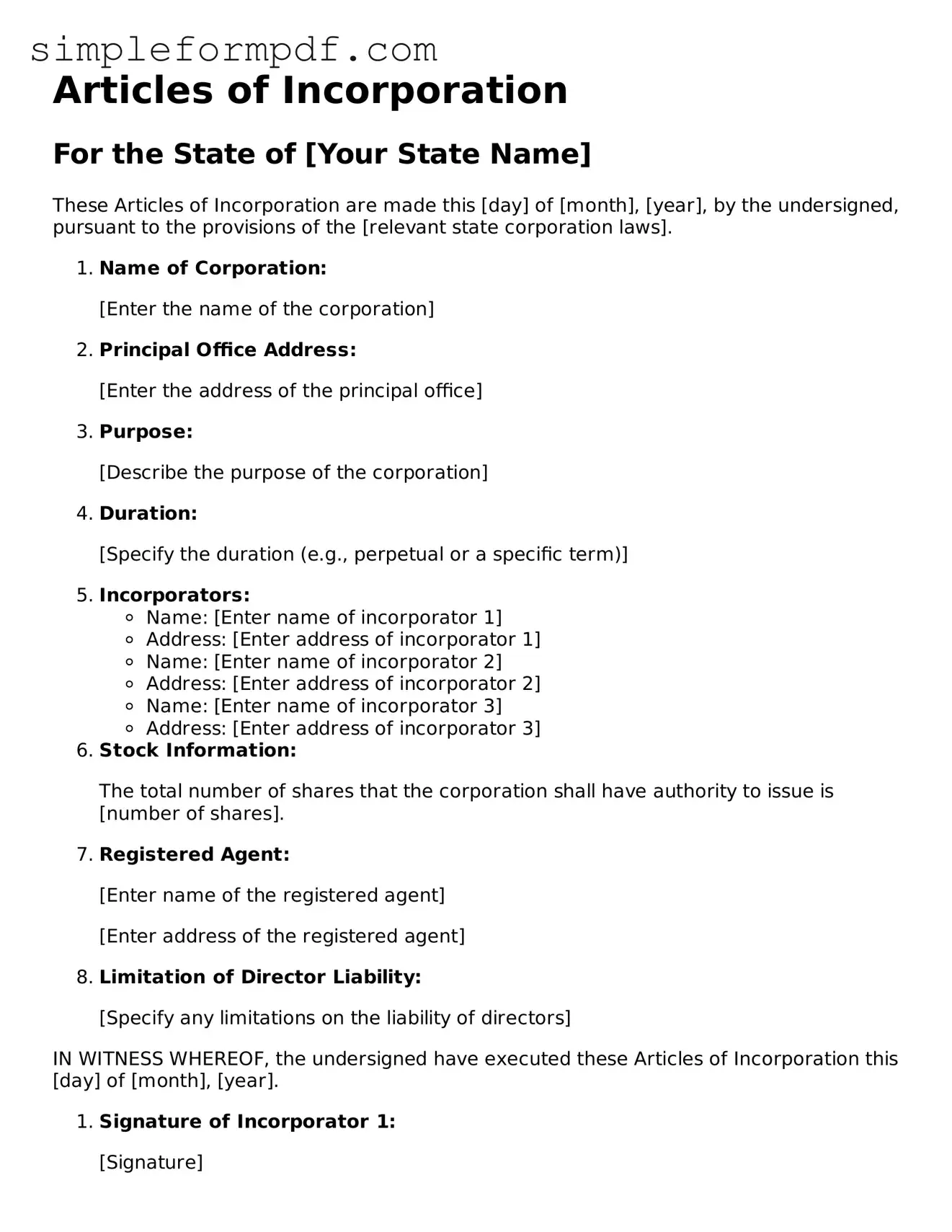Articles of Incorporation
For the State of [Your State Name]
These Articles of Incorporation are made this [day] of [month], [year], by the undersigned, pursuant to the provisions of the [relevant state corporation laws].
-
Name of Corporation:
[Enter the name of the corporation]
-
Principal Office Address:
[Enter the address of the principal office]
-
Purpose:
[Describe the purpose of the corporation]
-
Duration:
[Specify the duration (e.g., perpetual or a specific term)]
-
Incorporators:
- Name: [Enter name of incorporator 1]
- Address: [Enter address of incorporator 1]
- Name: [Enter name of incorporator 2]
- Address: [Enter address of incorporator 2]
- Name: [Enter name of incorporator 3]
- Address: [Enter address of incorporator 3]
-
Stock Information:
The total number of shares that the corporation shall have authority to issue is [number of shares].
-
Registered Agent:
[Enter name of the registered agent]
[Enter address of the registered agent]
-
Limitation of Director Liability:
[Specify any limitations on the liability of directors]
IN WITNESS WHEREOF, the undersigned have executed these Articles of Incorporation this [day] of [month], [year].
-
Signature of Incorporator 1:
[Signature]
-
Printed Name of Incorporator 1:
[Enter printed name]
-
Date:
[Enter date]
Additional incorporators may follow similarly by listing their information as necessary.
